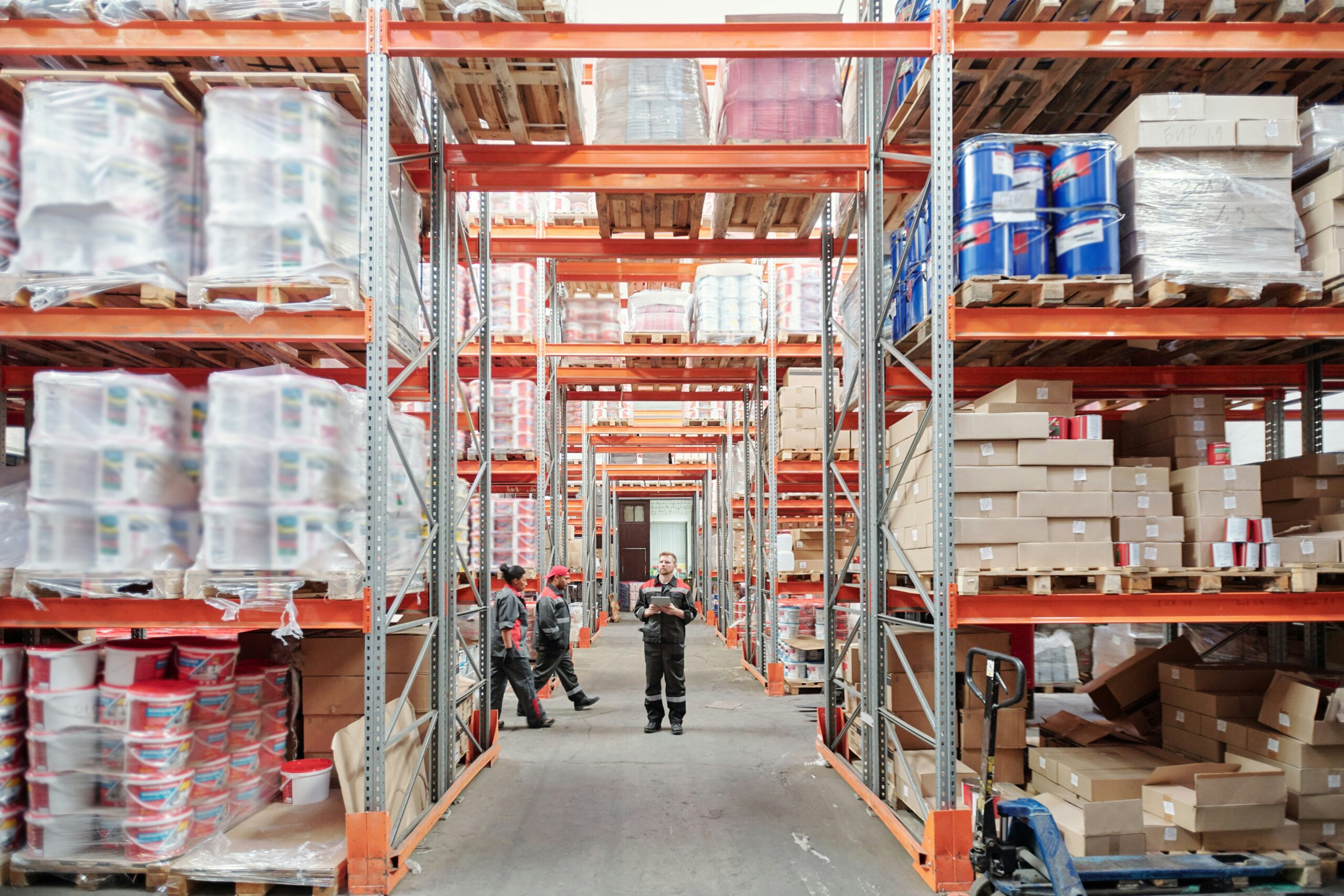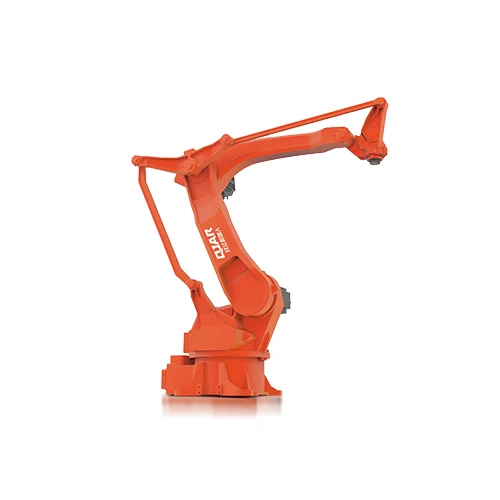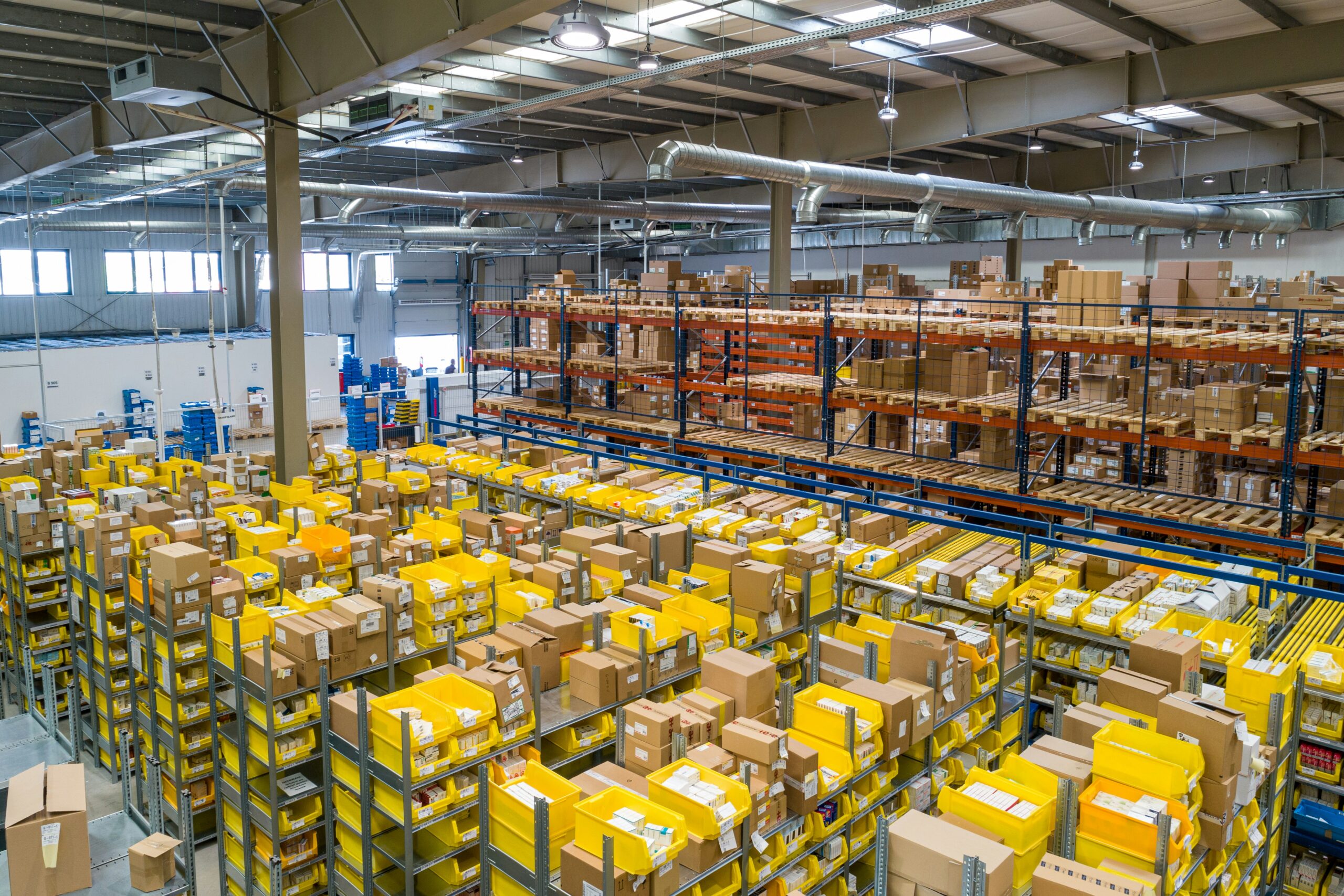Introduction
In the constantly evolving field of supply chain management, the value of smart logistics cannot be overstated. In order to optimize the efficacy, accuracy, and cost-effectiveness of product transportation and storage, smart logistics implements sophisticated technologies. One of the key elements of smart logistics is the use of pick and place robots, which have revolutionized the way products are handled in numerous industries. Exemplifying the capabilities of these robots, the QJRB30-1 is a 30kg payload 1820mm reaching distance robotic arm. Precision, stability, and high speed are the hallmarks of this robotic arm, which is engineered to meet the demands of modern logistics operations. The advantages, applications, and future trends of pick and place robots in relation to smart logistics are the focus of this article.
Progress in Intelligent Logistics
The term “smart logistics” refers to the integration of digital technologies and automated systems to enhance the efficiency and functionality of logistics operations. This concept has witnessed a significant transformation in recent decades as a result of the ongoing technological advancements and the increasing complexity of global supply chains.
Manual labor and primitive instruments were historically the primary sources of logistics, but they were often unreliable and inefficient. The late 20th century witnessed the introduction of automation, which was a significant turning point in the adoption of technologies such as automated classification systems, computerized inventory management, and barcode scanning.
Artificial intelligence (AI), robotics, and the Internet of Things (IoT) have further transformed logistics operations in recent years. These technologies facilitate real-time monitoring, predictive analytics, and automated decision-making, making logistics systems more intelligent and responsive. Among these advancements, the pick and place robots are a critical innovation that is distinct in that they offer unparalleled speed and accuracy in the processing of products.
An Understanding of Pick and Place Robots
Pick-and-place robots are automated devices that are engineered to retrieve objects from one location and deposit them in another with great precision and speed. In order to efficiently identify, grasp, and move objects, these robots are equipped with sophisticated sensors, cameras, and control systems.
In logistics, the primary advantages of employing pick and place robots are as follows:
Increased Efficiency and Speed: Pick and place devices operate at high velocities, which significantly reduces the time required to transfer items and complete tasks.
Improved Precision and Accuracy: These machines are capable of manipulating objects with remarkable precision, thereby reducing errors and ensuring consistent quality.
Eliminating the necessity for manual labor and the associated costs and errors, pick and place robots automate repetitive and labor-intensive tasks.
Today’s pick and place robots are epitomized by the QJRB30-1 robotic limb. With a payload capacity of 30kg and a reaching distance of 1820mm, this robot is engineered to execute high-speed, stable operations with minimal power consumption. Furthermore, its adaptability in logistics applications is further enhanced by its straightforward equipment composition, which facilitates integration with specialized palletizing software.
A Comprehensive Description of the QJRB30-1 Pick and Place Robot
The pick and place robot QJRB30-1 is designed to provide exceptional performance in a variety of logistics duties. Industries that necessitate precise and efficient products handling will find it an optimal solution due to its stable performance and high-speed operation.
The QJRB30-1 is distinguished by its consistent performance and the reduction of errors, which are facilitated by its high repeat positioning accuracy of ±0.05mm. The 1820mm armspan of the robot enables it to access a broad range of areas, rendering it appropriate for a diverse array of duties, including palletizing and sorting. Additionally, the QJRB30-1 is a cost-effective and energy-efficient option for businesses seeking to improve their logistics operations due to its basic equipment composition and low power output.
The QJRB30-1 is suitable for a variety of applications, such as palletizing, which involves the rapid and precise stacking and organization of products; sorting, which involves the efficient identification and categorization of items; and loading and unloading, which involves the effortless handling of large objects. A valuable asset in any smart logistics system, the QJRB30-1 is characterized by its versatility.
Pick and Place Robots in Smart Logistics: Applications
Businesses are able to enhance their efficacy and optimize their operations through the use of pick and place robotics, which are essential components of smart logistics. There are several critical applications of pick and place robots in logistics, including:
Order Fulfillment and Packaging
Order fulfillment and packaging are essential procedures that necessitate high precision and velocity in the realms of e-commerce and retail. Pick and place robots are capable of automating these duties by rapidly selecting items from shelves and securely arranging them in packaging. To guarantee that consumers receive the appropriate products promptly, this automation minimizes errors and reduces the time required to process orders.
Sorting and Categorizing Products
Also employed in depots and distribution centers are pick and place robots for the purpose of classifying and categorizing products. Items can be identified by these devices and subsequently positioned in specific locations based on their size, shape, or barcode information. The automation of the classification process enhances accuracy, reduces labor costs, and streamlines the process.
Depalletizing and Pallet
Stacking products onto palettes for storage or shipment and subsequently unloading them at their destination are critical logistics operations known as palletizing and depalletizing. This is where pick and place robots excel, as they are capable of swiftly and precisely arranging items on palettes, thereby minimizing the likelihood of damage. In palletizing applications, the QJRB30-1 is particularly effective due to its high precision and payload capacity.
Management of Inventory and Stock Replenishment
To ensure the efficiency of logistics operations, it is essential to maintain precise inventory levels and replenish stock. By automating these duties, pick and place robots can ensure that inventory levels are maintained by transporting objects to and from storage locations. The automation of this process enhances overall efficacy and reduces the necessity for manual inventory checks.
Impact of Pick and Place Robots on Efficiency: Case Studies Example 1: E-commerce Fulfillment Centers
The daily processing of large volumes of orders by e-commerce fulfillment centers necessitates efficient and precise operations. A prominent e-commerce organization improved its order processing speed by 40% through the implementation of pick and place robots such as the QJRB30-1. The robots’ capacity to promptly retrieve items from shelving and position them into packaging led to a reduction in the time required to fulfill orders and an increase in accuracy, which in turn led to increased customer satisfaction.
A second example is the food and beverage industry. Hygiene and efficiency are indispensable in the food and beverage sector. A prominent food processing company has implemented pick and place robots to manage packaging and sorting duties. Due to the robots’ precision and high-speed operation, products were packaged promptly and precisely, thereby minimizing waste and contamination. Production efficacy increased by 30% as a result of this automation, and labor costs were substantially reduced.
Precise management of sensitive products is necessary in the pharmaceutical and healthcare sectors. Medications were sorted and packaged by a prominent pharmaceutical company through the use of pick and place robots. Due to the robots’ dependability and precision, medications were packaged securely and managed correctly, thereby minimizing errors and guaranteeing regulatory compliance. As a consequence of this implementation, operational efficiency and product safety were both 25% improved.
Smart Logistics’ Future Trends with Pick and Place Robots
It appears that the future of smart logistics with pick and place robots is promising, as several emergent trends are expected to improve their capabilities and applications:
Integration of Artificial Intelligence and Machine Learning
Intelligent decision-making and enhanced adaptability will be facilitated by the integration of artificial intelligence (AI) and machine learning into pick and place robots. The efficacy and accuracy of logistics operations can be further improved by AI-powered robotics, which can learn from data, optimize their performance, and adapt to new tasks.
“Collaborative robots” (Cobots)
Designed to complement human laborers, collaborative robotics, or cobots, integrate the advantages of both. While also managing repetitive and labor-intensive tasks, these robots can provide assistance with tasks that necessitate human dexterity and decision-making. In logistics, the utilization of cobots will enhance safety, productivity, and adaptability.
Sensor Technologies of Great Advancement
Sensor technology advancements will improve the precision and safety of pick and place robots. Advanced motion detectors, 3D sensors, and high-resolution cameras will enable robotics to gain a more comprehensive understanding of their surroundings and manipulate objects with greater precision. The safety of robotics will be enhanced by their capacity to detect and avoid obstacles.
Forecasts for Future Developments
Greater autonomy, enhanced connectivity, and improved integration with other logistics systems are likely to be among the future advancements in pick and place robots. Complex duties will be executed by robots without human intervention, thereby increasing their autonomy. Enhancing connectivity will facilitate real-time communication and coordination between robotics and other systems, thereby further optimizing logistics operations.
Final Thoughts
By incorporating pick and place robots into smart logistics, supply chain operations have been substantially improved in terms of cost-effectiveness, accuracy, and efficiency. This robotic arm, the QJRB30-1, is a prime example of the advanced capabilities of these robots, providing high speed, precision, and versatility. The function of pick and place robots in smart logistics will only expand as technology continues to advance, fostering additional advancements and innovations in the sector. By adopting these technologies, businesses can remain competitive and satisfy the evolving requirements of contemporary supply chains.




